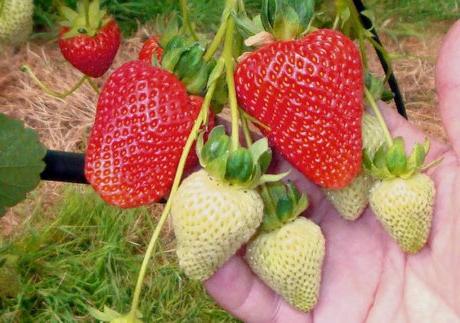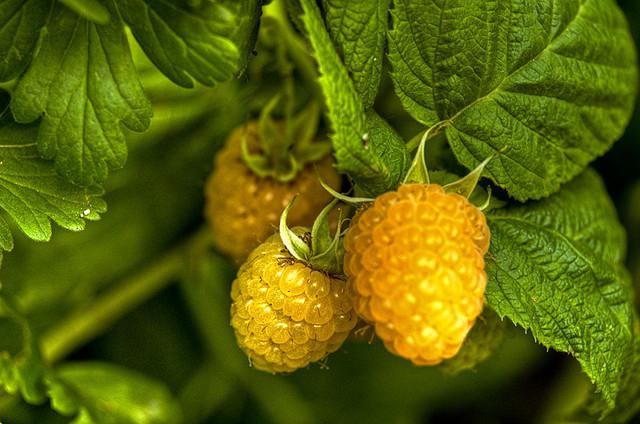Repaired raspberry. Cultivation and care
Raspberry is the favorite berry culture of manygardeners. Its sweet and sweet taste, medicinal properties is appreciated. It has long been known that it strengthens the immune system. But the period of consumption of fresh berries in the summer is not long. How can I extend it? To do this, it is necessary to take two separate sites in the garden, one to plant raspberries and the other to grow raspberry raspberries. Cultivation and care are quite simple: fertile soil, watering, weeding and feeding, mulching row spacing. But there are some features that are interesting to those who first started to cultivate such a culture as the repairing raspberry.

From ordinary raspberries, this differs in thatis capable of harvesting twice a season. The first crop ripens on last year's shoots, and the second - on grown up this summer young. Due to the fact that the second fruiting occurs in late summer or even in autumn, berries often do not have time to ripen and fall under frost. Therefore, many avoid a culture such as raspberry raspberry. Growing and caring for all the rules guarantee a good harvest. For this, follow simple rules. First, you need to choose a sunny warm place for planting - where snow melts most quickly in the spring (preferably on the south side of the fence or buildings). Secondly, the site should be the most lit in the garden. If shade is permissible for ordinary raspberries, even an insignificant shadow will delay the autumn fruiting of its closest relative, such as the repair raspberry.
Growing and nursing in the central strip of Russia
Often in the middle band, a repair raspberrygrown as an annual crop with one autumn crop. To do this, after harvesting berries cut off all the shoots - both old and young. In spring, immediately after snow melting, all the power of plants is expended on the growth of new shoots, which grow powerful, and an abundance of flower buds is formed on them. Berries grow large and clean, bear fruit from August to snows. If a simple raspberries are harvested every other day or every day, then this one will hold fast to the branches and look good even after a week.
Do not forget about the separate placement of plantations, since the repair can muffle the more tall simple raspberries. Cultivation and care are similar, but the first is more hygrophilous - water more often and abundantly.

For the middle band, the best results were shownthe most early-maturing varieties: Indian summer, Hercules, Reliable. In the south it is possible to grow varieties of later ripening - Zeva, September, Lyulin, Heritage. With hot summer and warm autumn, these varieties realize their full yield potential. For the regions of Siberia, good results for such varieties as Diamond, Apricot, Elegant, August's miracle, Dawn Evening. Having planted a raspberry bush in a repair spring, in August-September in the same year you will collect a good harvest of tasty and large berries.

One drawback - most varieties have very littleshoots and such a raspberry is difficult to replicate. To grow cuttings for the 3rd year after planting, remove all shoots in the form of a circle with a diameter of 15 cm from the center of the bush. 10-20 shoots will develop from the roots left in the ground, which can be used for breeding.
Reproduction of raspberries can be done in springgreen cuttings. You need to choose those shoots that have an etiolated zone - a part that grows underground. The best shoots for cuttings are those in which the aerial part is not more than 5 cm and a powerful rosette of young leaves with a bronze or dark crimson color. Such shoots are called "nettles".
The one chosen for rooting is not digging,and cut with a sharp knife at a depth of 5 cm, gently pull it out of the ground. Transport and store this planting material in water can not, you need to wrap it in a damp cloth and put it in a plastic bag. Harvesting such cuttings is done in the morning in cloudy or rainy weather. Soil for rooting is a mixture of equal volumes of washed large sand and peat. A layer with a thickness of 10 cm is sufficient. Lower the cuttings before planting with powder dust of charcoal. The place of planting should be immediately poured. On top of the cuttings, stretch the polyethylene to the arcs. Cover the top with a newspaper or non-woven cover material to prevent overheating. The green cuttings take root within a maximum of 3 weeks. After 4 weeks they are transplanted either to a permanent place or to containers.
Raspberry propagates and green root offspring - they are transplanted immediately to a permanent place or into a greenhouse, making them shaded by a week or two.
</ p>




